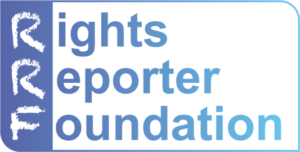In its new report, the EU Civil Society Forum on Drugs (CSFD) urges member states and EU institutions to fulfill their commitments and bridge the gaps in providing access to and improving quality of prevention, treatment and harm reduction services.
The CSFD, an expert group of the EU Commission, published a report assessing civil society perspectives on the implementation of the EU Action Plan on Drugs (2017-20) in regard to access to and quality of various key services aiming at preventing, treating and reducing drug-related problems (you can download the full report from here!). The report is based on the findings of a survey completed by 169 civil society organisations (CSOs) working on the ground, from 32 European countries, including all EU member states but Malta. The report was written by Iga Kender-Jegorska (YODA) and Peter Sarosi (Rights Reporter Foundation).
Watch this video we produced on how civil society sees the EU Action Plan on Drugs!
The report shows significant and numerous gaps between the ambitious strategic goals and policy actions adopted by member states, and the reality on the ground perceived by CSOs. Some of the inequalities are regional: the access to and the quality of services is much lower in the East-Central European and Western Balkan countries than in the Western and Southern member states. It is alarming that in some East-Central European member states certain basic services, such as needle and syringe programs, has been reduced to zero or close to zero.
There are large differences between countries regarding the accessibility of various services. Innovative harm reduction interventions, such as drug consumption rooms, naloxone distribution programs and drug checking services are only available in a few member states. There are also discrepancies between accessibility and quality of services. For example, while drug prevention services are widely accessible in most member states, their quality is perceived low and they are rarely available on the Internet. Access to most services among vulnerable populations, such as women, young and ageing drug users, prisoners and migrants, is much lower than among the general population.
Differences in perceived access to services in Europe
Abbreviations: NSP = needle and syringe program, OST = opiate substitution program, Naloxone = naloxone distribution to prevent overdoses, Drug-checking = checking substances to avoid overdoses and poisoning, DCR = drug consumption room, ACS = alternatives to coercive sanction.



“While there are alarming drug problems, such as changing drug markets and rising rates of overdoses and infections across Europe, drug policy is not a priority for decision makers anymore,” said Laurene Collard, the chair of the CSFD. “Although member states adopted a progressive Action Plan on Drugs in 2017, this commitment does not seem to realise in providing more resources to scale up services on the ground.”
The CSFD recommends the EU Commission to strengthen its drug coordination system and urges member states to fill the gaps in funding and political support for services with low access, including among vulnerable populations. It also calls member states to improve the quality of services by implementing the minimum quality standards of demand reduction adopted by the EU Council in 2015. The report also emphasises the need to involve civil society in decision making in all levels.
Article: Peter Sarosi
Video: Istvan Gabor Takacs




